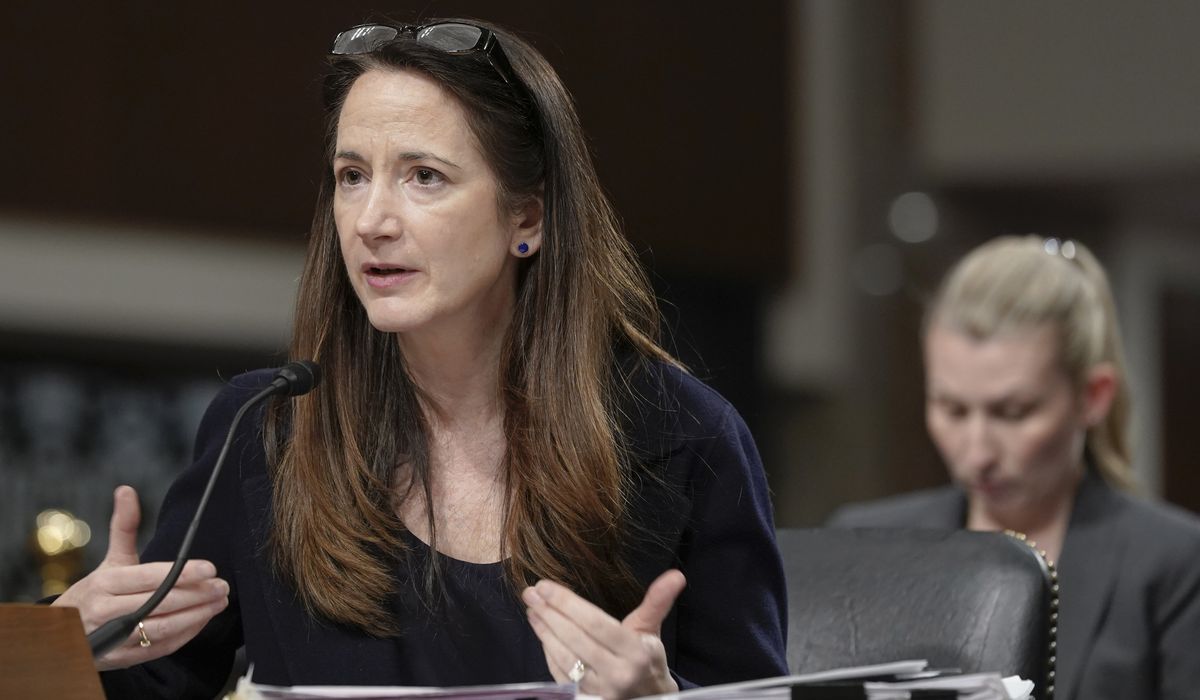Intelligence chief releases strategy urging sharper focus on China, Russia

The government’s lead intelligence agencies are retooling to deal with rising threats posed by China and Russia while also adopting hiring policies aimed at making spy services more inclusive and diverse, according to a new strategy outline from the Office of the Director of National Intelligence.
The strategy report made public by Director of National Intelligence Avril Haines outlines six goals for the 18 government agencies engaged in intelligence collection and analysis.
“The United States faces an increasingly complex and interconnected threat environment characterized by strategic competition between the United States, the People’s Republic of China, and the Russian Federation,
felt perhaps most immediately in Russia’s ongoing aggression in Ukraine,” Ms. Haines said in introducing the strategy.
The first goal calls for strengthening intelligence operations against foreign adversaries, including China, which is described as “the only U.S. competitor with both the intent to reshape the international order and, increasingly, the economic, diplomatic, military and technological power to do so.”
Russia, in the wake of its invasion of neighboring Ukraine, poses the most immediate regional threat in Europe to U.S. interests, “but lacks the across-the-spectrum capabilities” of China, the report states.
Reflecting past shortcomings and a lack of overall reform within the bureaucratic intelligence system, the strategy outlines areas for improving the nation’s spying bureaucracy.
“The [intelligence community] must deepen and expand its expertise, strengthen its collection and analytic capabilities and embrace new partnerships and external perspectives to address policymaker needs in this more competitive environment,” the report states.
The total U.S. intelligence budget request for fiscal 2024, which begins Oct. 1, is $101.7 billion. That includes funding for both civilian and military intelligence.
Intelligence agencies also will invest in new methods of intelligence collection, along with cultivating new sources of intelligence and seeking to work closer with U.S. allies and partners and with private sector groups. The CIA and other intelligence services also will seek to improve capabilities against strategic competitors through “greater interoperability” among various geographic and functional intelligence disciplines.
Intelligence agencies currently operate in sections that focus on geographic regions of the world as well as through mission centers focused on issues like cyber espionage and terrorism. The strategy also calls for improving spy agencies’ ability to provide rapid and accurate information on adversaries’ intentions, capabilities and actions.
For example, the CIA recently created a China Center that is dedicated to coordinating intelligence work against Beijing. Current efforts include monitoring tensions and the potential for conflict across the Taiwan Strait.
Determined to diversify
Reflecting what critics say is the “woke” political agenda of the Biden administration, the second listed goal of the new intelligence strategy is to develop a “diverse workforce.”
The White House under President Biden created the Gender Policy Council, tasked with promoting gender equity and equality in both domestic and foreign policy.
Intelligence services, according to the strategy, “must overcome long-standing cultural, structural, bureaucratic, technical and security challenges to reimagine and deliver the [intelligence community] workforce of the future,” the report said, without elaborating. To that end, intelligence agencies will modernize recruiting, hiring and vetting systems with the goal of producing “a diverse, trusted, agile and expert” workforce.
“Diversity, equity, inclusion, accessibility and other human capital initiatives will only succeed if they are subjected to rigorous and continuous analysis, evaluation, transparency, and learning,” the report states.
Other goals listed in the new strategy include improving intelligence contracting and procurement and broadening intelligence partnerships with additional alliances like the “Five Eyes” intelligence-sharing group linking the United States, Britain, Canada, Australia and New Zealand.
Another stated goal of the strategy is to improve intelligence work on transnational challenges, including climate change, drug trafficking, financial crisis, supply chain attacks, corruption, recurring diseases and new disruptive technologies.
The last goal of the strategy calls for bolstering national resilience, such as hardening and protecting critical infrastructures.
“Protecting the intelligence community and the nation’s critical infrastructure from complex threats requires a deeper understanding of the implications of destabilizing trends, and improved early warning to improve the nation’s recovery and response,” the report says.
Intelligence agencies also plan to harden their infrastructures against cyber and other attacks.
The strategy contains little emphasis on counterintelligence – the thwarting of foreign spy efforts.
The sole reference to counterintelligence is contained in the last goal. It states that the intelligence community “must sustain its counterintelligence capabilities and expertise against espionage and other damaging intelligence activities conducted by our foreign adversaries.”
Counterintelligence within U.S. intelligence agencies was downgraded in the 1970s following the ouster of CIA counterintelligence chief James Angleton, who operated independently in seeking out foreign spy operations and penetrations of U.S. foreign spy agencies. Since then, U.S. intelligence has continued to repeated episodes of damaging spy penetrations and losses of recruited agents.
The most recent failure was the loss of more than two dozen of the CIA’s recruited agents working secretly in China beginning in 2010.
The 18 components of the U.S. intelligence community include two independent agencies — the CIA and Office of Director of National Intelligence — and nine Pentagon agencies, including the Defense Intelligence Agency, National Security Agency and military intelligence units.
The ODNI also coordinated policy for seven other intelligence agencies, including the FBI and the spy arms of the Energy, Homeland Security, State and Treasury Departments and Coast Guard and Drug Enforcement Administration intelligence units.

